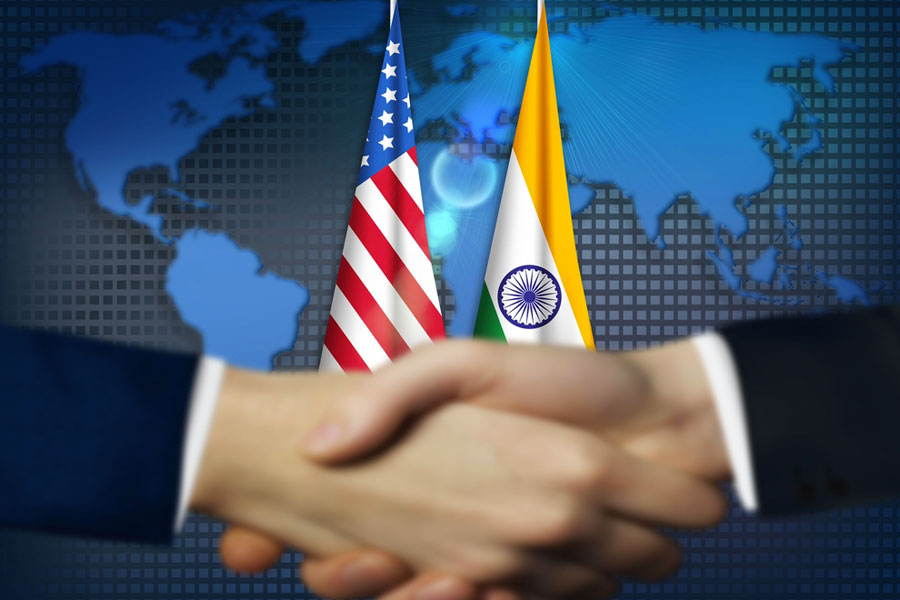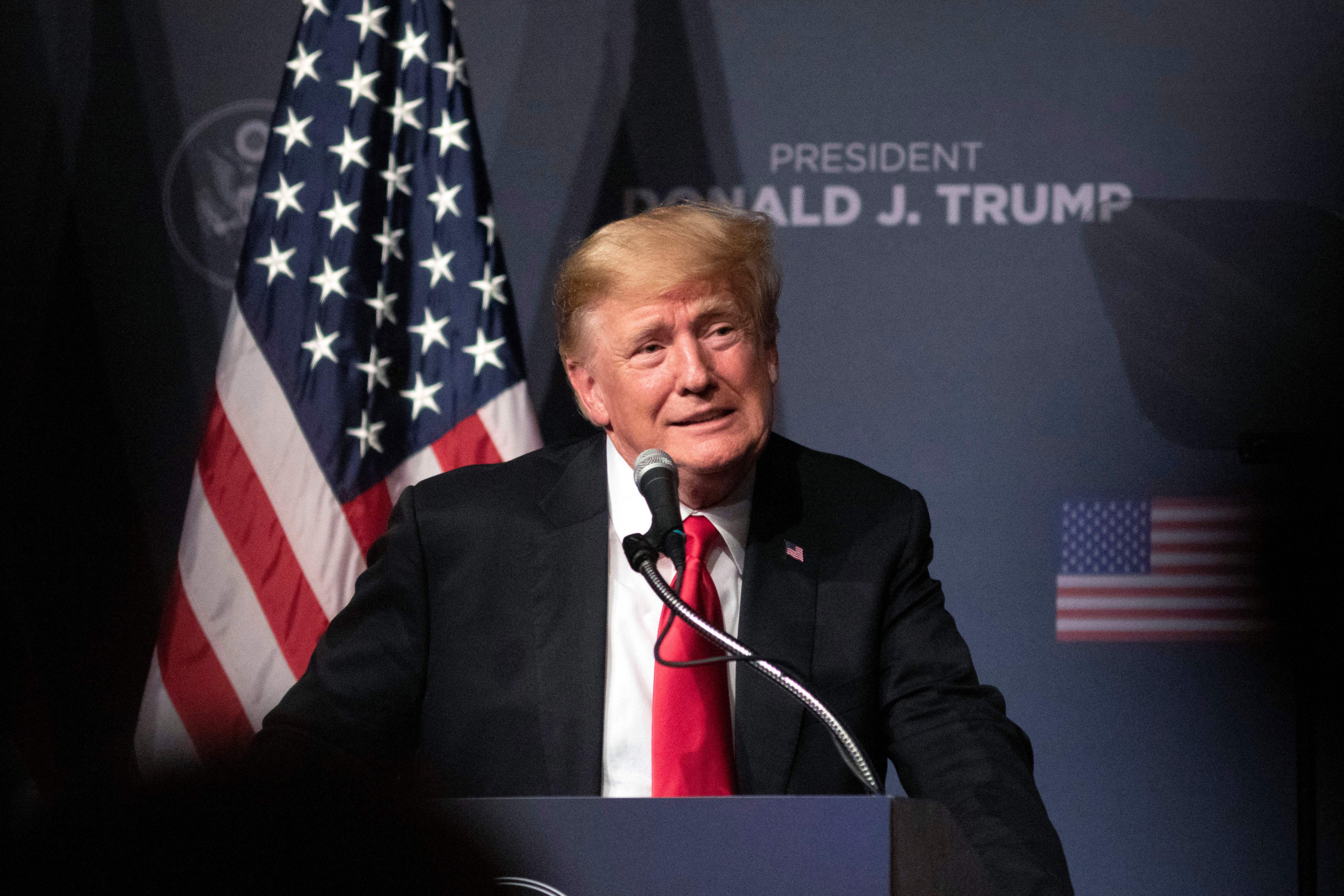India-US Bilateral Trade Talks: What To Expect

Table of Contents
Key Areas of Negotiation in the India-US Trade Talks
The India-US trade talks are multifaceted, encompassing several critical areas demanding careful consideration and compromise. Successful negotiation hinges on finding mutually beneficial solutions that address the concerns of both nations.
Reducing Trade Barriers and Tariffs
Currently, several tariffs and non-tariff barriers impede the free flow of goods between India and the US. These obstacles hinder the full potential of bilateral trade and negatively impact businesses and consumers on both sides.
- Specific goods affected: Steel and aluminum tariffs imposed by the US, alongside India's tariffs on certain agricultural products and IT services, remain significant points of contention. These tariffs have created trade imbalances and led to retaliatory measures.
- Potential tariff reductions or eliminations: Negotiations will likely focus on reducing or eliminating tariffs on a range of products, aiming to increase trade volume and create a more level playing field. The extent of these reductions will depend on the willingness of both sides to compromise.
- Impact on domestic industries: Reducing tariffs could lead to increased competition for domestic industries in both countries. This necessitates careful consideration of safeguards to protect vulnerable sectors and ensure a smooth transition. Negotiations will likely involve discussions around safeguards and support mechanisms for affected industries.
Intellectual Property Rights (IPR) Protection
Strong Intellectual Property Rights (IPR) protection is crucial for fostering innovation and attracting investment in both India and the US. Disagreements around IPR enforcement, particularly in the pharmaceutical and technology sectors, have been a recurring theme in past negotiations.
- Current disagreements: Concerns remain regarding the enforcement of patents, trademarks, and copyrights in India. The US consistently pushes for stricter enforcement, while India emphasizes the need for affordable access to essential medicines.
- Potential compromises: Finding common ground requires balancing the need for robust IPR protection with concerns about accessibility and affordability. Negotiations will likely explore mechanisms to ensure effective IPR enforcement while addressing public health concerns.
- Implications for innovation and investment: A strong IPR regime attracts foreign direct investment (FDI) and stimulates innovation. A clear and effectively enforced IPR framework is vital for attracting investment in technology and pharmaceutical research and development. Data localization policies will also be a key area of focus, impacting the flow of data and investment in digital sectors.
Digital Trade and Data Flows
The rapid growth of digital trade necessitates a robust framework governing data flows, balancing the benefits of cross-border data transfer with concerns around data privacy and security.
- Concerns around data privacy and security: Both countries have concerns regarding data privacy and security. Negotiations will involve discussions on establishing clear rules for data storage, transfer, and processing, ensuring compliance with each country’s regulations.
- Potential for a common framework: Establishing a mutually acceptable framework for digital trade rules would significantly boost e-commerce and the digital economy. This could involve aligning standards on data protection and cybersecurity, harmonizing regulations, and promoting digital literacy.
- Importance of e-commerce regulations: Clear and consistent e-commerce regulations are crucial for fostering trust and facilitating cross-border e-commerce transactions. Negotiations will aim to create a fair and predictable environment for businesses operating in the digital sphere.
Agricultural Trade
Agricultural trade is a complex area, with significant differences in market access and sanitary and phytosanitary (SPS) measures between India and the US.
- Specific agricultural products: Discussions will likely focus on specific products such as dairy, poultry, and fruits, addressing issues like tariffs, SPS measures, and market access limitations.
- Potential trade deals or concessions: Negotiations could involve reciprocal concessions on agricultural products, leading to increased market access for both countries' farmers. This would necessitate addressing concerns around food safety and quality standards.
- Impacts on farmers: The outcomes of these negotiations will directly impact farmers in both countries. A successful agreement could increase income and market opportunities, but it's also crucial to ensure support for farmers during any potential transition.
Investment and Market Access
Boosting investment flows between India and the US requires addressing concerns around market access and regulatory hurdles.
- Sectors likely to see increased investment: Sectors such as technology, renewable energy, infrastructure, and pharmaceuticals are likely to see increased investment flows with improved market access and regulatory clarity.
- Regulatory hurdles and concerns: Streamlining regulatory processes, reducing bureaucratic obstacles, and ensuring transparency are essential to encouraging greater investment. This could involve harmonizing regulations, streamlining approval processes, and creating a more predictable investment environment.
Conclusion
The India-US bilateral trade talks encompass a wide range of critical issues, from reducing trade barriers and strengthening IPR protection to establishing a framework for digital trade and boosting agricultural trade. Reaching a mutually beneficial agreement will require significant compromise and a commitment to finding solutions that address the concerns of both nations. A successful outcome would significantly strengthen the economic relationship between India and the US, boosting growth and prosperity in both countries. Stay tuned for updates on the crucial India-US bilateral trade talks and their impact on future India-US trade relations. For further information, refer to official government websites and reputable news sources covering international trade.

Featured Posts
-
 Thousands Rally Against Trump Policies In Anchorage For A Second Time
May 09, 2025
Thousands Rally Against Trump Policies In Anchorage For A Second Time
May 09, 2025 -
 Vintervaer I Sor Norge Sjekk Veimeldinger For Du Kjorer
May 09, 2025
Vintervaer I Sor Norge Sjekk Veimeldinger For Du Kjorer
May 09, 2025 -
 Povernennya Stivena Kinga V Kh Yogo Dumka Pro Trampa Ta Maska
May 09, 2025
Povernennya Stivena Kinga V Kh Yogo Dumka Pro Trampa Ta Maska
May 09, 2025 -
 Edmonton Oilers Playoff Chances Hinge On Draisaitls Recovery
May 09, 2025
Edmonton Oilers Playoff Chances Hinge On Draisaitls Recovery
May 09, 2025 -
 Deutsche Banks Strategic Investment In Defense Finance A New Deals Team
May 09, 2025
Deutsche Banks Strategic Investment In Defense Finance A New Deals Team
May 09, 2025
Latest Posts
-
 Jeffrey Epstein Files Release Understanding Ag Pam Bondis Decision And The Public Vote
May 10, 2025
Jeffrey Epstein Files Release Understanding Ag Pam Bondis Decision And The Public Vote
May 10, 2025 -
 Attorney Generals Fentanyl Display A Deeper Look
May 10, 2025
Attorney Generals Fentanyl Display A Deeper Look
May 10, 2025 -
 Transparency And Justice Evaluating The Release Of Jeffrey Epstein Files And Ag Pam Bondis Role
May 10, 2025
Transparency And Justice Evaluating The Release Of Jeffrey Epstein Files And Ag Pam Bondis Role
May 10, 2025 -
 Pam Bondis Claim Upcoming Release Of Epstein Diddy Jfk And Mlk Files
May 10, 2025
Pam Bondis Claim Upcoming Release Of Epstein Diddy Jfk And Mlk Files
May 10, 2025 -
 The Jeffrey Epstein Files A Critical Analysis Of Ag Pam Bondis Decision And Public Vote
May 10, 2025
The Jeffrey Epstein Files A Critical Analysis Of Ag Pam Bondis Decision And Public Vote
May 10, 2025
